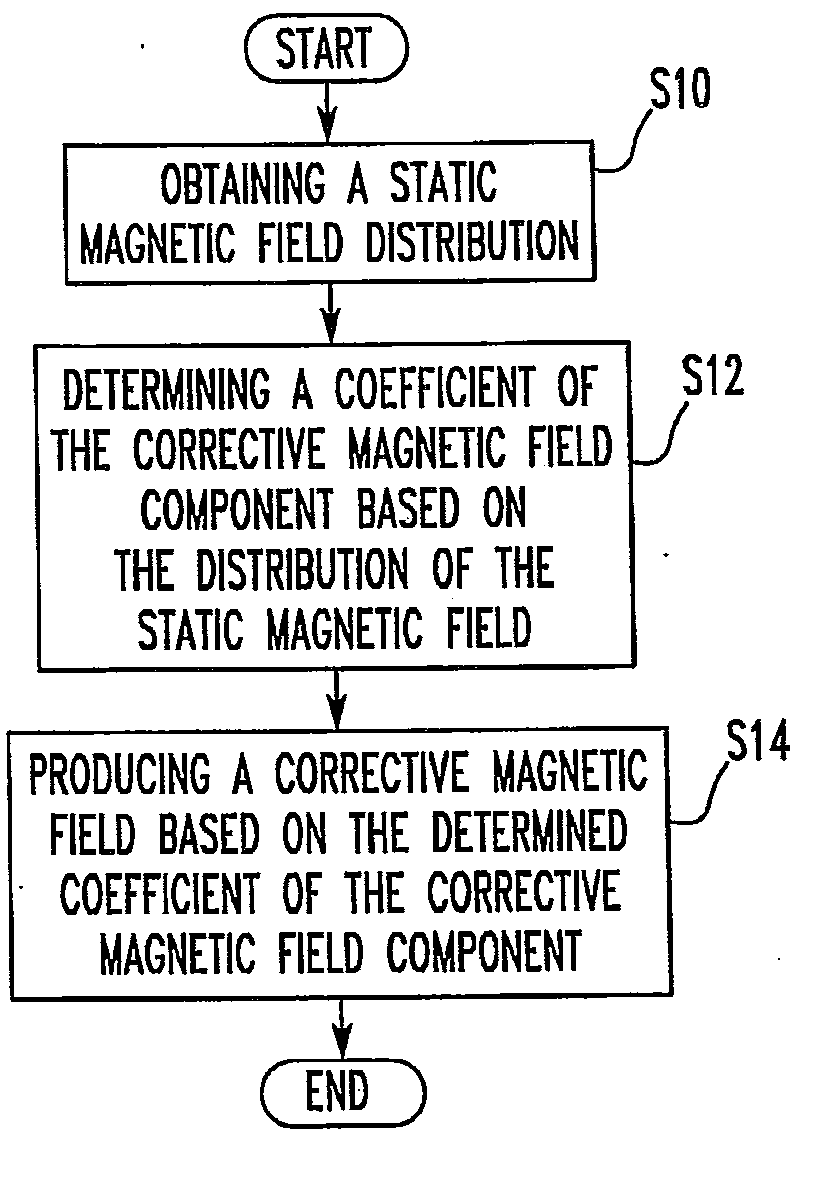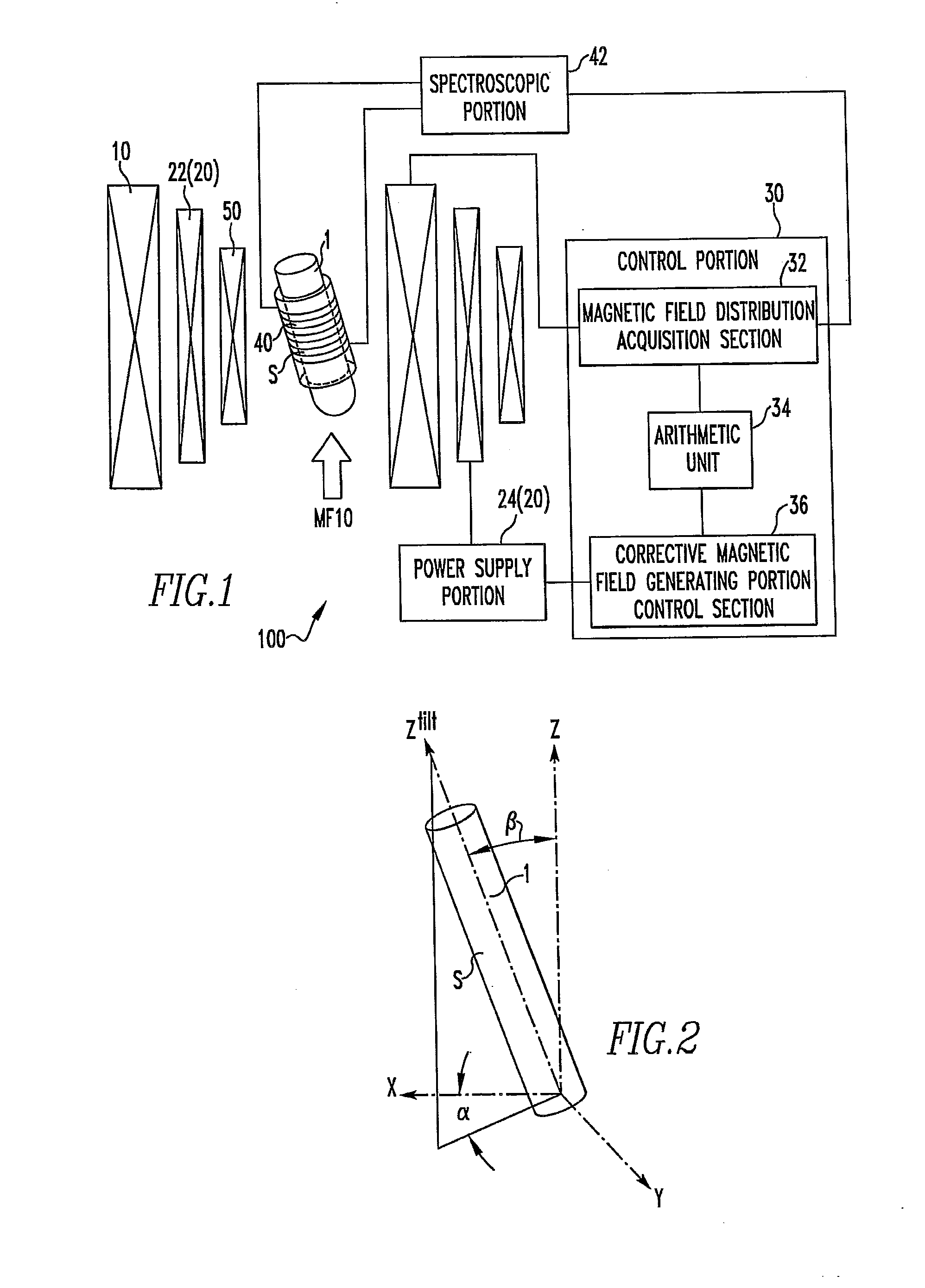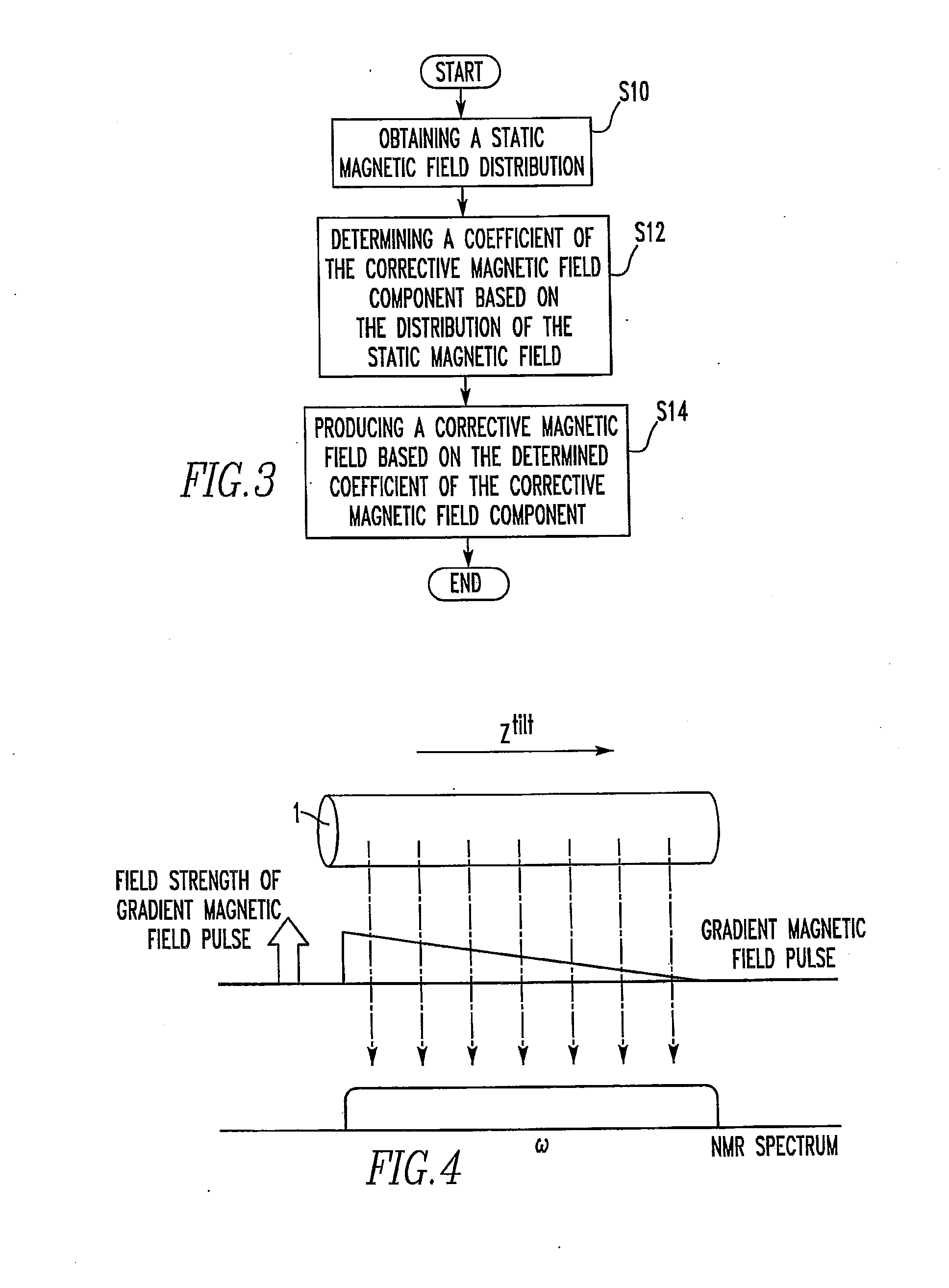Nuclear Magnetic Resonance Spectrometer and Method of Magnetic Field Correction
a technology of nuclear magnetic resonance and magnetic field correction, which is applied in the direction of magnetic measurements, liquid/fluent solid measurements, instruments, etc., can solve the problems of time-consuming methods, inability to obtain information indicating what position within the sample is shifted by what frequency, and inability to forecast the electrical energized position of the shim coil, etc., to achieve efficient correction
- Summary
- Abstract
- Description
- Claims
- Application Information
AI Technical Summary
Benefits of technology
Problems solved by technology
Method used
Image
Examples
first modified embodiment
[0159](1) A first modified embodiment is first described.
[0160]In the above-described example of nuclear magnetic resonance spectrometer 100, the angle β (made between the Z-axis and the Ztilt-axis) shown in FIG. 2 is the magic angle θm. The angle β may also be π / 2. That is, in this modified embodiment, the sample S in the sample tube 1 is spun about an axis tilted at or substantially at the angle of π / 2 with respect to the static magnetic field and the resulting NMR signal is measured. For example, the axis tilted substantially at the angle π / 2 with respect to the static magnetic field is an axis tilted at an angle in the range (π / 2)−5°≦β≦(π / 2)+5°.
[0161]In Eq. (5) above, with respect to the first-order magnetic field component BZ(1)tilt of the corrective magnetic field along the Ztilt-axis, the coefficients of BZ(1) and BZ(3) are null when β=π / 2. Therefore, BZ(1) does not affect the magnetic field component BZ(1)tilt. Also, BZ(3) does not affect the magnetic field component BZ(3)ti...
second modified embodiment
[0167](2) A second modified embodiment is next described.
[0168]In the above-described example of nuclear magnetic resonance spectrometer 100, the angle β (angle made between the Z-axis and the Ztilt-axis) shown in FIG. 2 is the magic angle θm. In contrast, in this modified embodiment, the angle β should satisfy the relationship, 5 cos2 β−3=0. That is, the angle β can be approximately 39°. The angle satisfying the relationship, 5 cos2 β−3=0, is herein referred to as the first angle θ1. In this modified embodiment, the sample S in the sample tube 1 is spun about an axis tilted strictly at the first angle θ1(β=θ1) with respect to the static magnetic field and the resulting NMR signal is measured. In addition, the sample S can be spun about an axis tilted substantially at the first angle θ1 with respect to the static magnetic field. That is, the axis is tilted at an angle, for example, lying in the range θ1−5≦β≦θ1+5°.
[0169]In Eq. (5), when β=θ1, all of the first-order and second-order m...
third modified embodiment
[0175](3) A third modified embodiment is next described.
[0176]Where there are plural NMR signals, it is impossible to create a magnetic field map using a spin echo method or a gradient echo method. As such, a magnetic field map can be created, even if there are plural signals, by exciting only certain peaks instead of excitation of the first 90-degree pulse used in a spin echo method or gradient echo method.
PUM
 Login to View More
Login to View More Abstract
Description
Claims
Application Information
 Login to View More
Login to View More - R&D
- Intellectual Property
- Life Sciences
- Materials
- Tech Scout
- Unparalleled Data Quality
- Higher Quality Content
- 60% Fewer Hallucinations
Browse by: Latest US Patents, China's latest patents, Technical Efficacy Thesaurus, Application Domain, Technology Topic, Popular Technical Reports.
© 2025 PatSnap. All rights reserved.Legal|Privacy policy|Modern Slavery Act Transparency Statement|Sitemap|About US| Contact US: help@patsnap.com



